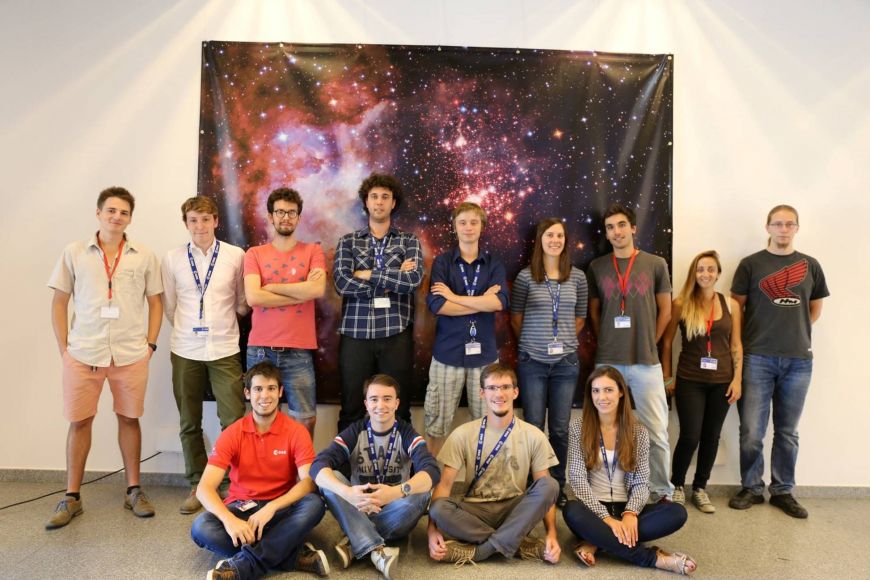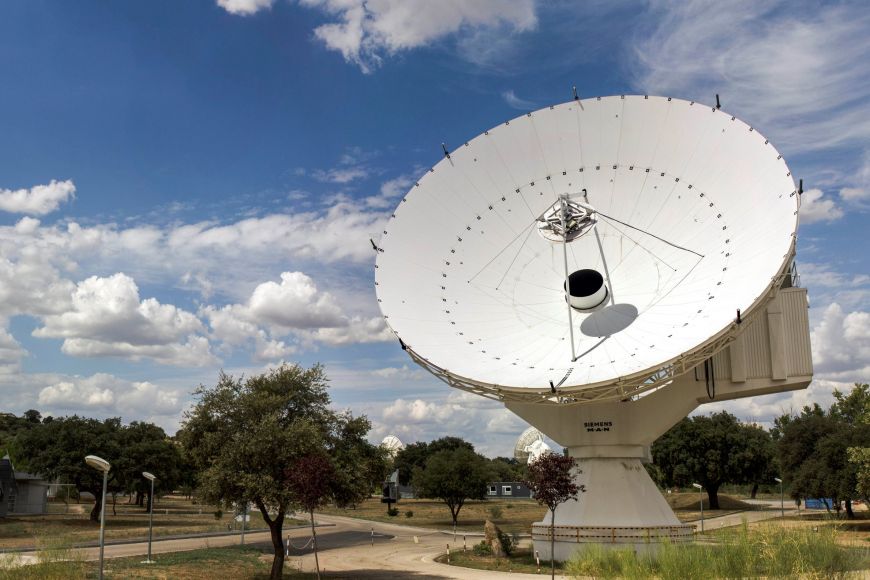Though he was no big admirer of the starry skies as a child, he fell for astrophysics after enrolling at Masaryk University. After a five-month traineeship at the European Space Agency (ESA), Vladimír Domček would like to go on to become a PhD student in the field.
One of the reasons behind this decision is a discovery that he took part in as a trainee at the agency’s centre in Madrid. He was able to confirm the existence of several interstellar clouds close to the active core of the NGC 985 galaxy in the Cetus constellation.
Domček was considering a traineeship or a stay abroad from the very beginning of his master’s studies. His supervisor recommended a stay at the ESA, which offers some twenty programmes each year for students all over Europe.
However, to be selected as an ESA trainee was no easy task: “The head of my project in the agency told me that they had about 70 applicants for a single project. They selected several candidates based on their CVs and invited them for in-person or Skype interviews,” says the young student of astrophysics about the tender procedure.

His task at ESA was to process data on X-rays emitted by the core of the NGC 985 galaxy that had been collected by a satellite at the beginning of 2015. Domček explained the basic idea about how galactic centres work: “It is assumed that there is a supermassive black hole at the heart of every galaxy, whose enormous gravity attracts the surrounding mass. It is an extraordinary phenomenon accompanied by the formation of an accretion disk, where substances heat up to very high temperatures and emit various types of radiation into space, which can be observed and recorded.”
As a part of his work, he observed the inner part of the galactic nucleus – a disc where interstellar clouds should be present, according to previous observations – in X-ray data that can only be collected by special satellites orbiting the Earth.
As Domček describes the discovery, “We were able to confirm the existence of five accumulations with different physical properties in the observed part of the galactic nucleus. These accumulations are moving away from the centre of the galaxy.” In his description, the clouds move at speeds ranging from 300 to 7,000 kilometres per second (approx. 186 to 4,350 miles per second), they differ in density, and the speed of the motion of particles is also different in each accumulation.
The study of black holes is a relatively new area in astronomy. Although Albert Einstein formulated a theory predicting their existence, the first body that could potentially be called a black hole was discovered only in 1971. “There is a lot of uncertainty surrounding black holes. For example, we don’t know how the most massive black holes are formed, what their immediate surroundings look like, and how they influence the development of the whole galaxy. These are the questions that scientists are currently trying to answer,” says the young astrophysicist.

However, he also had time for other activities in Madrid besides his project. Thanks to frequent seminars presented by researchers from various European universities as well as NASA, he gained valuable knowledge and experience. “There was a lot to do outside work as well. All the trainees went together on hiking trips and sightseeing to some of the major Spanish cities; we organised sports events and, of course, observations of the night sky,” says Domček.
He adds that the students also started a project called Tech for Space, with the aim of supporting teamwork and international cooperation of students with the European Space Agency. Moreover, he hopes that the traineeship at a prestigious institution will help him to be admitted to a PhD programme. He would like to focus his studies on such topics as interstellar matter, galaxy nuclei and black holes.
“I would like to work as an observational astronomer in the future, focusing my research on X-rays, ultraviolet radiation, and gamma radiation,” says Domček, who already works part-time at observatories in Brno and Vyškov, and occasionally also in his home town of Partizánské.
